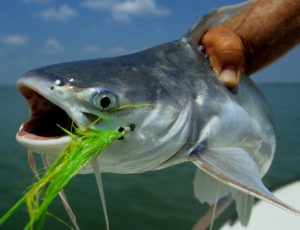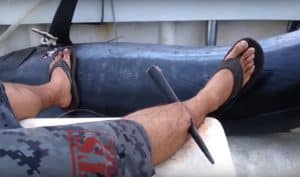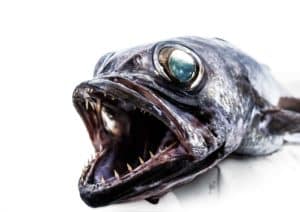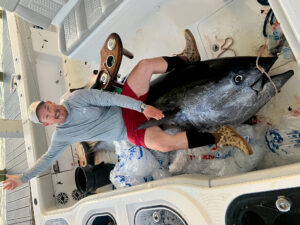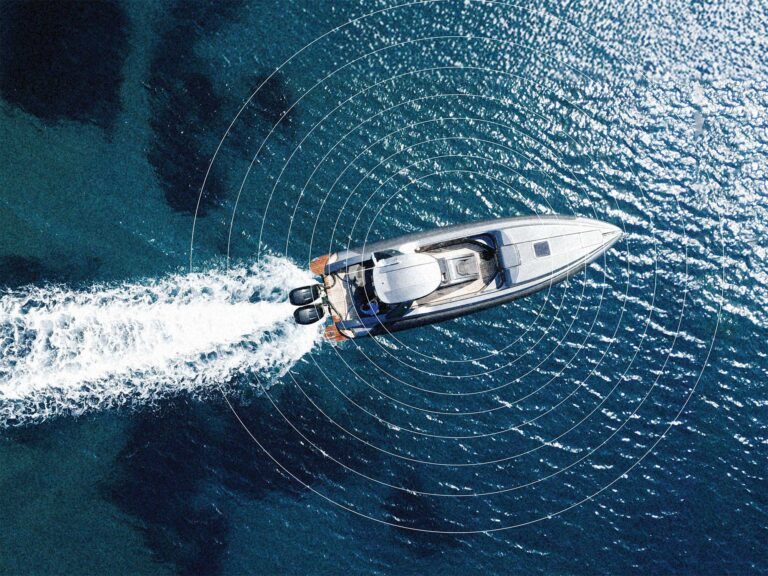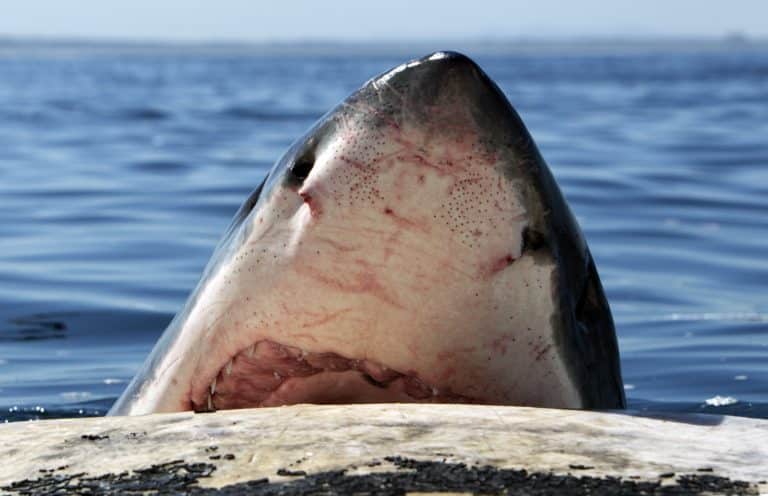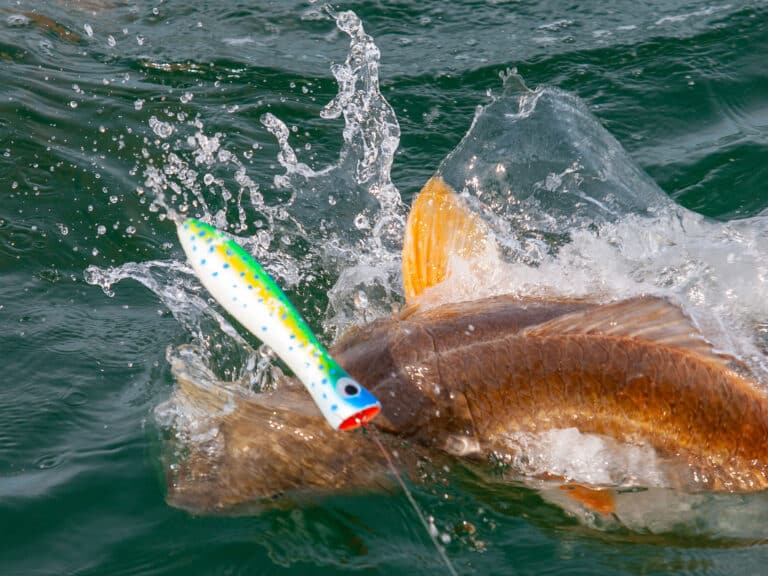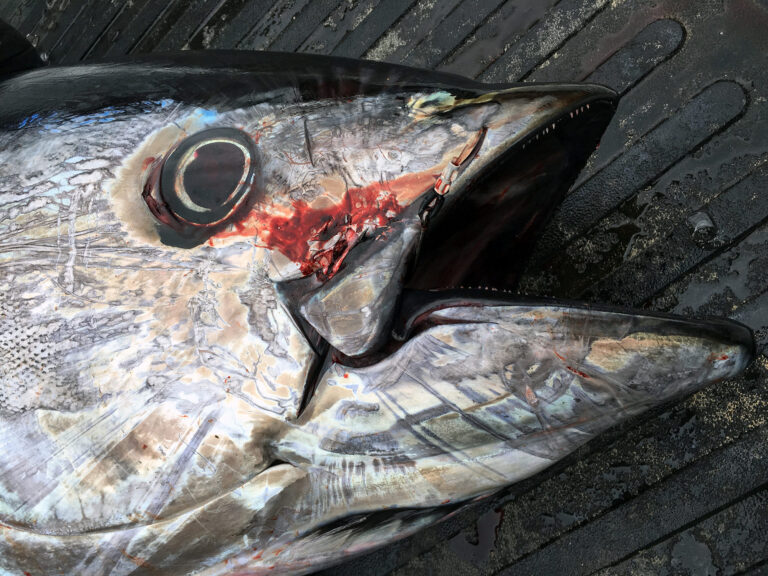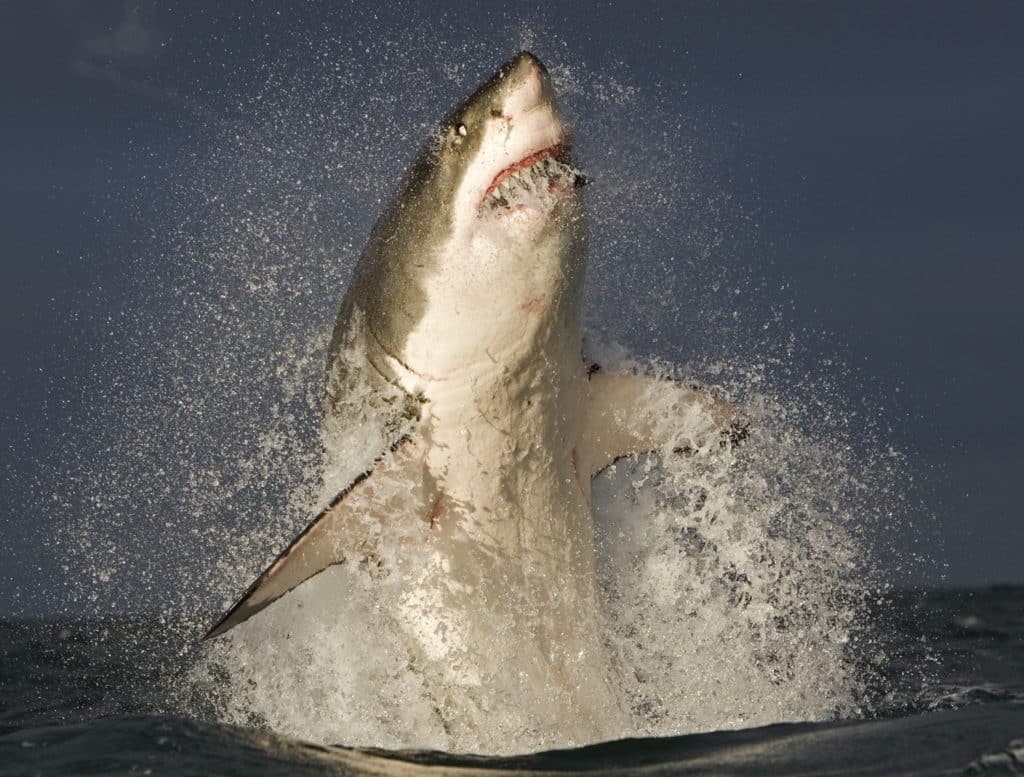
- READ MORE: Fishing’s Most Dangerous Animals — The Impalers (Part 1)
- READ MORE: Fishing’s Most Dangerous Animals — The Stingers (Part 2)
Most of us don’t think of sport fishing as a particularly hazardous sport. No doubt statistics would bear out that it is not. But every sport has its own unique risks, and saltwater fishing is no exception. And as much as the odds weigh against you or me getting seriously injured by something that lives in the sea, you’d better believe it’s possible. In fact, the list of critters worldwide that wait to poke, sting, nip, swallow, infect or otherwise harm you, turns out to be a pretty long and diverse one — probably more so than most of us had ever thought. Here, we cover the “biters,” but in two other parts check out the “impalers” and “stingers.”
Great White Shark Bites Boat and Injures Angler
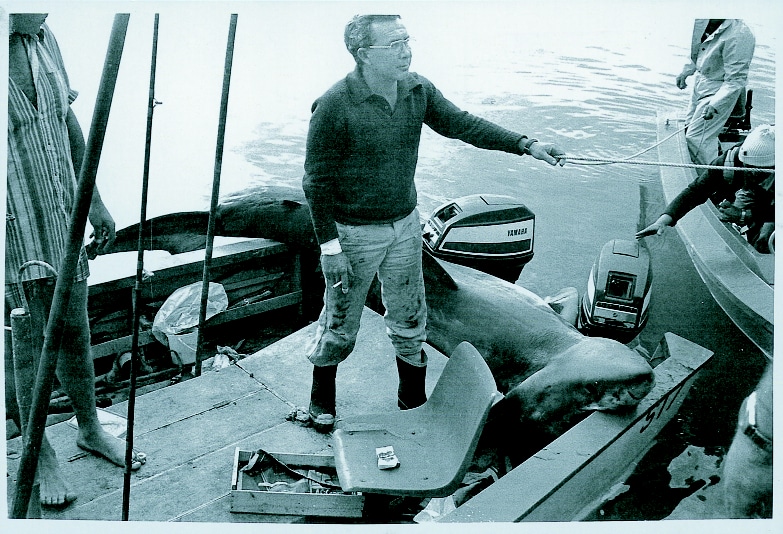
The waters off False Bay, near Cape Town, beckoned with a tranquility uncharacteristic for South Africa. Alex Mamacos and three friends took advantage of the weather, heading out in their 18-foot “ski-boat” (as South Africans call their fishing boats). They found the fish biting. One of the four anglers, Dillon Alexander, had just pulled a fish boatside when Mamacos leaned over to help him. “I felt an awful thump and was flattened beneath something heavy,” Mamacos told the late Charles Norman, then a Sport Fishing correspondent with Sportfish Africa.
Big points for understatement: The “something heavy” proved to be a white shark of 1,100 pounds, which — out of the blue (in all senses) — suddenly launched itself a good 10 feet into the air just off the stern, somehow landing perfectly in the boat’s cockpit with its head wedged firmly in the space behind the raised fish box and just in front of the two outboards. Its jaws remained tightly clamped on one gunwale and its tail hung over the other, Norman reported.
- The good news: The boat remained largely intact and afloat, though the half-ton shark could easily have damaged the small craft seriously had it landed differently.
- The bad news: The shark had smashed the boat’s steering and they couldn’t run back in.
- The worst news: Underneath the huge animal lay Mamacos who said, “I didn’t realize it then, but my bladder had been ruptured and my pelvis fractured.”
After a few moments of astonished horror, Mamacos’ three friends managed to pull him out from beneath the huge and remarkably motionless shark. Mamacos was alive but in great pain. Meanwhile, the young men radioed around to other boats in the area asking what to do with a shark on their boat. “Take the hook out and throw it back over!” came the reply. They explained that wouldn’t be very feasible with this shark.
Finally, another small boat approached to help, but those aboard changed their minds once close enough to assess the situation and the shark’s size, promptly turning around and motoring away. Fortunately, the next boat to come along — larger and with occupants a bit more stalwart in character — towed the damaged 18-footer, shark and all, back to port.
By the time they made it in, the shark had died. A dockside crane hoisted it out — “its teeth remaining clamped so tightly on the gunwale that the crane lifted the whole boat partly out of the water before the jaws lost their grip,” Norman says. Meanwhile, Mamacos was rushed to Cape Town’s Groote Schuur Hospital where he would spend the next three weeks recovering.
A Mako Shark’s Powerful Jumps
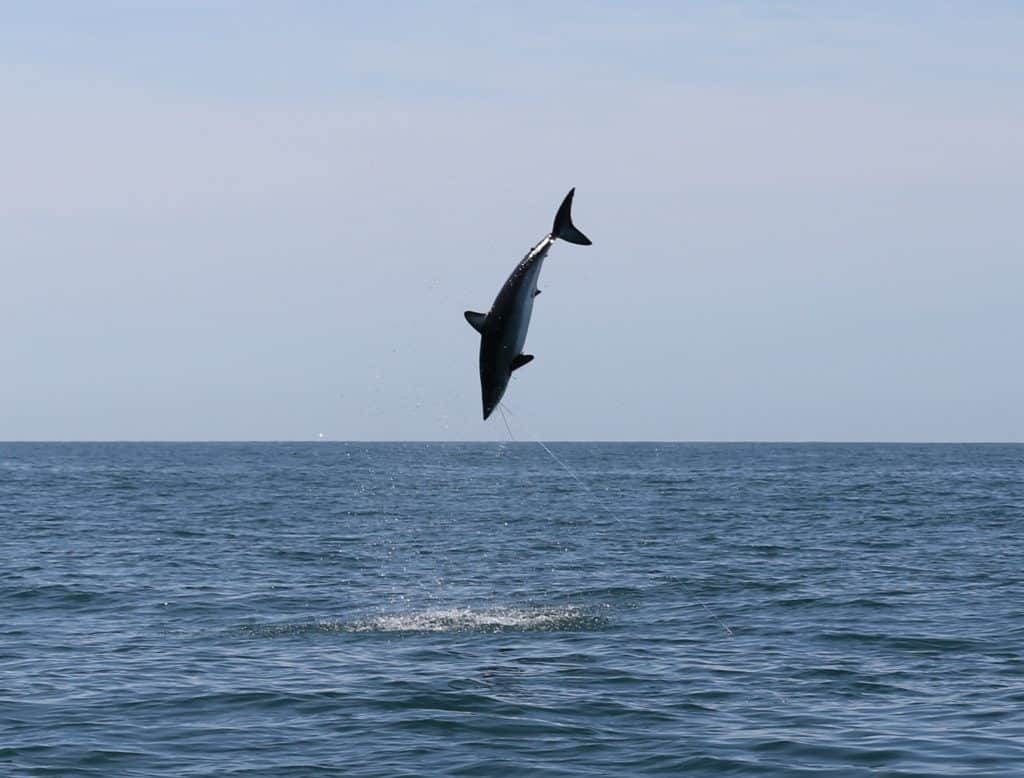
Alec Mamacos discovered the sea’s sinister side on that nearly tragic day in 1977, but ironically it was from the mass of a huge shark; he and his companions escaped the wrath of its terrible jaws only by the twist of fate that left it with a death grip on their boat. Except in South Africa, white sharks don’t often leap from the water. Makos, on other hand, jump more regularly. And one did, on a June day when angler Rich Gambescia of Voorhees, New Jersey, headed out on his Albemarle, Suture Self to do some shark fishing at the Cigar, a popular spot 30 miles off Ocean City, New Jersey.
“In 110 feet of water, close to a wreck, we set out our chum, two mackerel rigs and a bluefish-filet rig. At 12:30 p.m., the bluefish rig went down,” Gambescia said. His wife, Ruth, took the rod and within seconds, a 71⁄2-foot missile erupted from the surface. “Mako!” one of the crew shouted. The shark landed near the stern, and almost as soon as it had hit the water, it exploded from the surface again.
“Now it was an incoming rocket,” Gambescia said. “It slammed down in the cockpit of the Albemarle,” knocking Gambescia over. The crew somehow managed to usher the thrashing, gnashing mako shark out the cockpit door before it could sever any limbs, but it did more damage than anyone initially realized. The shark crashing against Gambescia’s leg caused the entire limb to swell and put him in the hospital — but at least he survived.
Shark Attacks: Provoked and Unprovoked
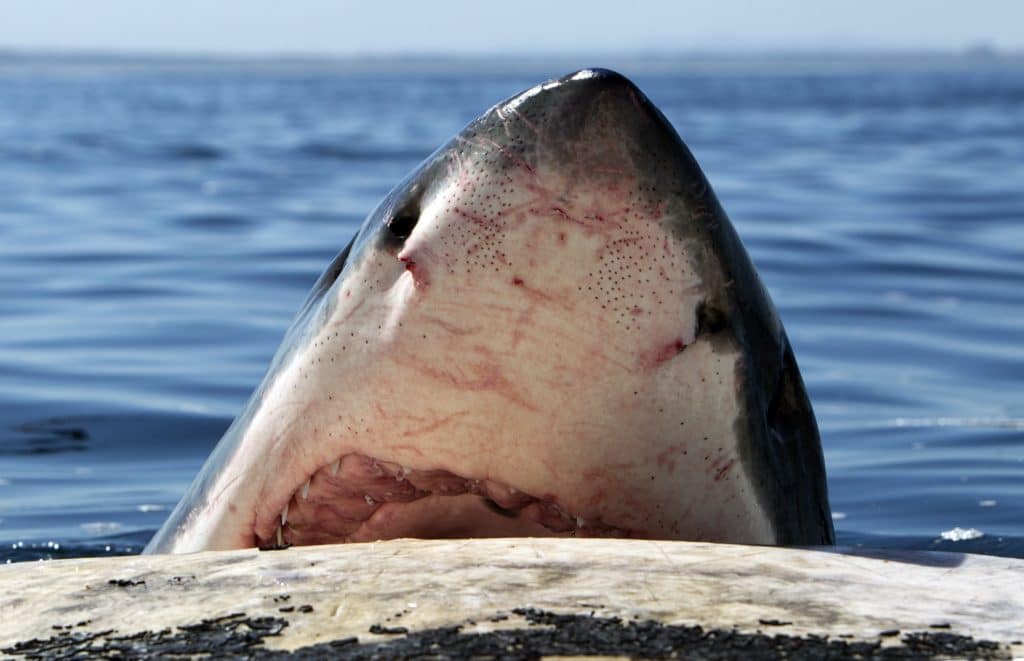
Of course, these sharks didn’t end up in boats by intent, as part of some calculated attack. But in fact, a number of unprovoked attacks on boats — mostly by white sharks — have been reported for decades. According to the Shark Research Committee, among the places generating such reports: Australia, Japan, South Africa, Canada, South America and North America.
A well-documented account describes what for all the world seems like a case of a large white shark stalking a lobster boat over a period of many days off Cape Breton, Nova Scotia. Other lobster fishermen saw the shark clearly appear behind the dory day after day, until it finally charged the boat and smashed a large hole through the hull. One of the men died (by drowning), but the other was rescued. The tooth taken from the hull positively identified the attacker as a white estimated at 1,100 to 1,200 pounds.
Underestimating a shark cost a Seward, Alaska, skipper several cracked ribs and came close to costing him much more. “I hate to tell the story because I still don’t know why I did it,” confessed Capt. Andy Mezirow.

Mezirow had a halibut rather than a shark in mind as he waited at the gunwale, gaff in hand for an angler’s big halibut to show color. What turned up, to his surprise, was a salmon shark that seemed neither particularly large nor seemed to know it was hooked. Salmon sharks, by the way, are very close, cold-water cousins of the mako. It tossed the hook right next to the boat, and, “What happened next, I can’t fully explain, but as the shark swam right there for a moment, I reached out with my trusty, 6-foot top-shot gaff and stuck it in the head. The mayhem that ensued was just unbelievable!”
The stuck shark began tail-walking around the stern and, “all of a sudden, it was much larger than it had appeared.” Unfortunately, Mezirow added, the gaff’s forged stainless head would neither bend nor break. The angry shark dragged him 12 feet across the stern from corner to corner, jamming him against the railing. That’s when the ribs cracked — and, at that point, drenched in salt water and blood — he looked for some help.
“All five rods lay scattered on the deck like pickup sticks, and five faces stared wide-eyed at me through the cabin windows.” Eventually a couple souls ventured out and offered Mezirow enough assistance to extricate himself from his jam. He hasn’t free-gaffed any salmon sharks lately.
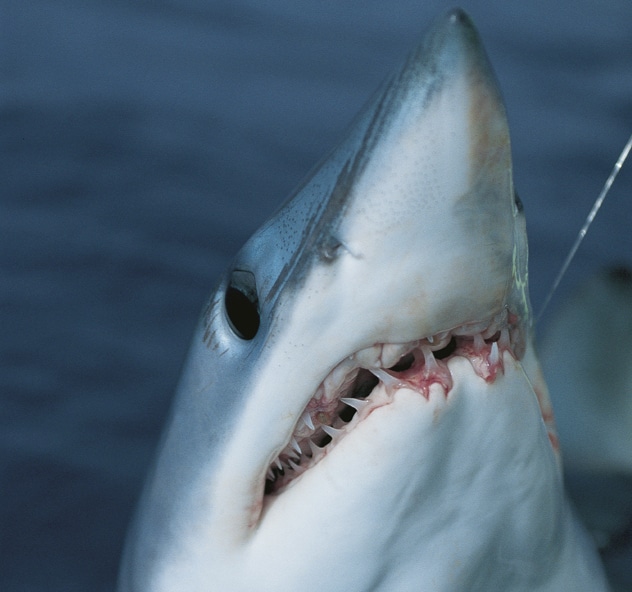
In March 1999, a small mako (apparently no more than 4 feet) sent an Auckland, New Zealand, fisherman to the hospital for 38 stitches after it twisted around in the bottom of his small boat to sink its teeth into his thigh. The poor bloke commented that it could have been worse as the shark had initially snapped at his groin.
Capt. Allen DeSilva, who ran Mako Charters in Bermuda, had boated a number of yellowfin tuna when he caught sight of a 300-pound mako in the chum slick. “We quickly rigged up a heavy wire leader, hooked on a small tuna, and we were in business.”
After getting the shark boatside, “my mate and I decided to put a tail rope on the mako and tie it to the stern cleat instead of dragging it in through the transom door. Good thing, too: About 15 minutes later, the mako we thought we had killed came to life, jumping and spinning so hard, we thought it would break the tail rope.” Worse, it managed to back flip right onto the deck but fortunately leapt back over the transom. “Can you imagine if we’d put that fish in the boat?” DeSilva said. “I’ll never forget that one! Don’t put a mako in your cockpit unless you’re sure it’s dead,” he warned. “I mean really sure!”
Wounded by a Wahoo
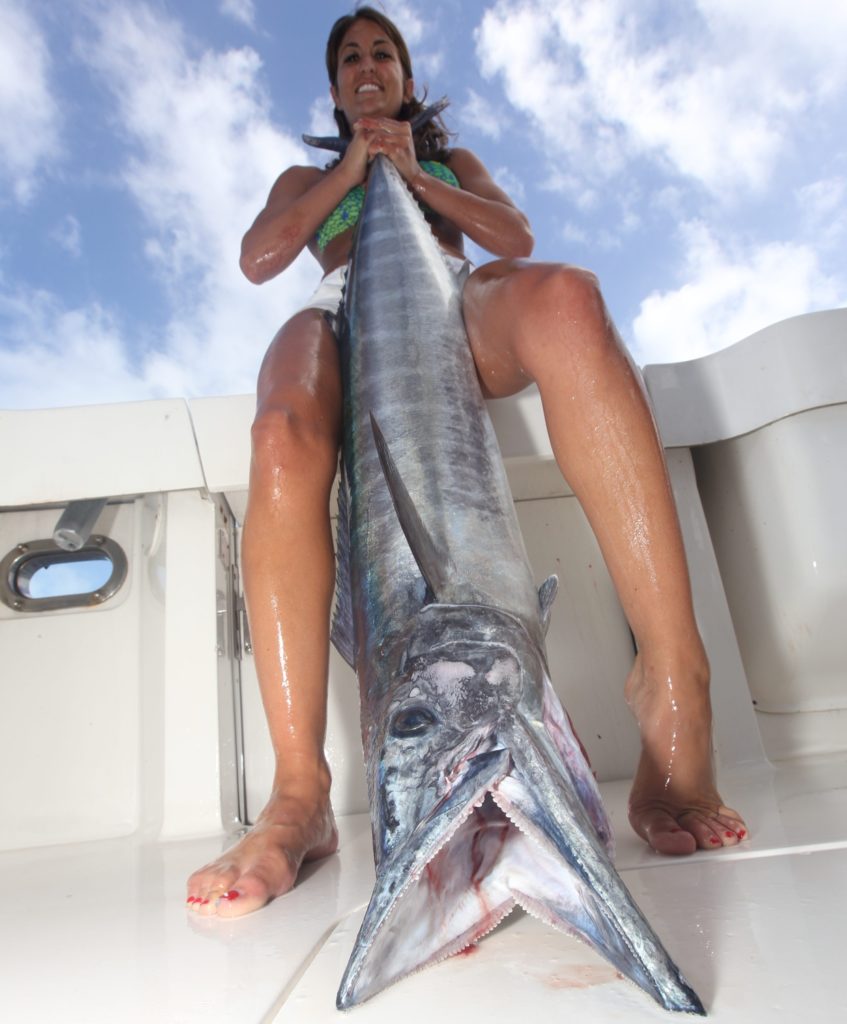
Mako mouths notwithstanding, perhaps no fish can beat a wahoo in the instant slice-and-dice department. Wahoo’s’ narrow jaws are lined with white razor blades. It’s hard to imagine any edge much sharper in nature. All of that’s fine for wahoo but not so good for an angler who, through misfortune or mistake, comes in contact with a hoo’s pearly whites. Lower Florida Keys skipper emeritus, Capt. Jim Sharpe of Big Pine Key, acknowledges that many marine animals can cause painful injuries; however, “the most serious injuries aboard my Sea Boots offshore charter boats have been inflicted by wahoo,” Sharpe said.
“Some years ago,” said Sharpe, “one of my mates gaffed a 20-pound wahoo and lifted the fish into the boat. The wahoo spun around on the gaff, bringing the man’s leg into range of the wahoo’s mouth …. One quick snap and his leg was lacerated 3 inches deep,” in the shape of a V. After a pressure bandage was applied to control bleeding, the mate was rushed to a hospital — where he spent nine months in rehab to restore damaged tendons and ligaments.
He mentions other captains and deckhands sustaining injuries from the slashing teeth of wahoo. One Keys skipper suffered more than humiliation when a big wahoo actually lunged out of the fish box just after it had been dropped in and clamped down on the man’s derriere, which Sharpe describes as a very serious bite. According to Sharpe, with decades of experience: “An accident is an accident, but most of these wahoo bites are avoidable. The biggest danger is gaffing the wahoo in the middle of the body, rather than the head. When gaffed in the middle of the body and held on the gaff in the boat, the wahoo can easily swing around within reach of a leg — and it’s the wahoo’s nature to snap at anything in front of its mouth. That snap occurs with lightning speed.”
The Sharp Teeth of Mackerel
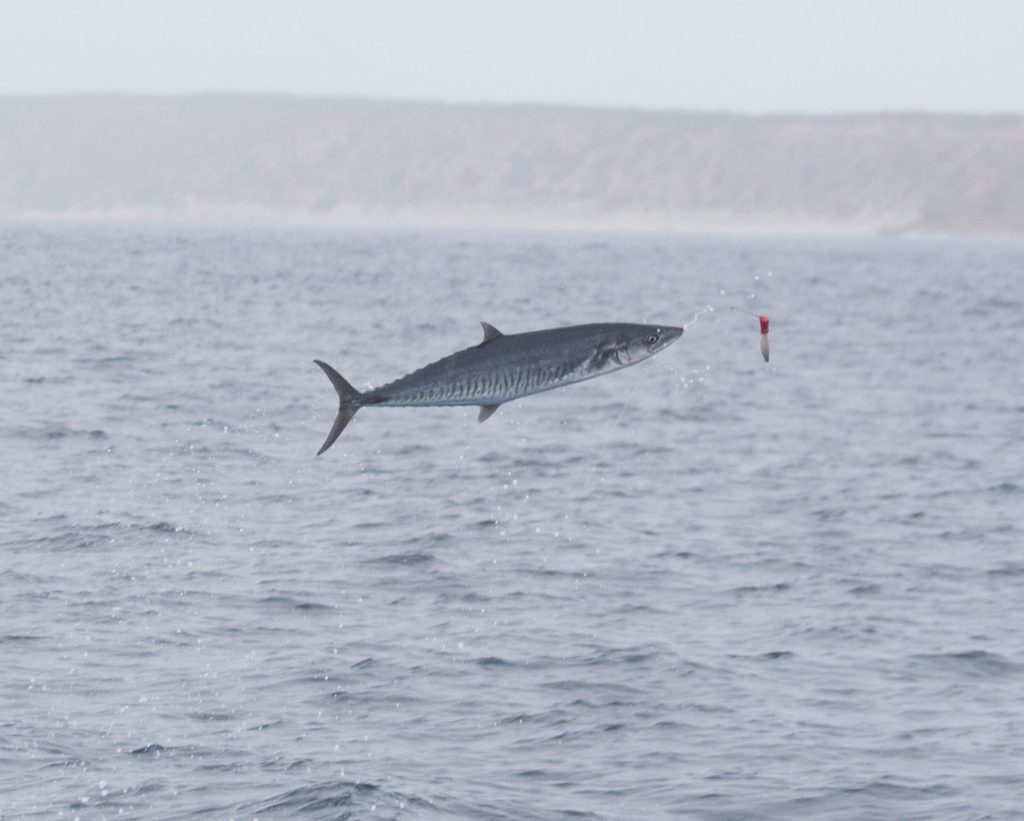
The same, logically enough, goes for a big king mackerel, closely related to wahoo and armed with a similar set of choppers. Mike Leech, former president of the International Game Fish Association, can attest to that. Leech still recalls the first day of the Miami Billfish Tournament many years ago when he hooked a 17-pound king, which his young son gaffed in the middle of the back and hauled in.
“Even on the gaff,” Leech recounted, “the king could wag its head and tail enough to catch me on my right instep just above my boat shoes. The wound required 25 stitches and knocked me out of the tournament!”
Any fish with teeth that jumps when hooked can be a hazard to an angler in the wrong place at the wrong time. In the past, I’ve written about an Australian angler with a vivid scar on his neck where a big narrowbarred mackerel (much like a king mackerel with barred sides) had skyrocketed just astern on a small fish at the surface and landed teeth-first, just below the poor fellow’s face.
A Barracuda’s Bite
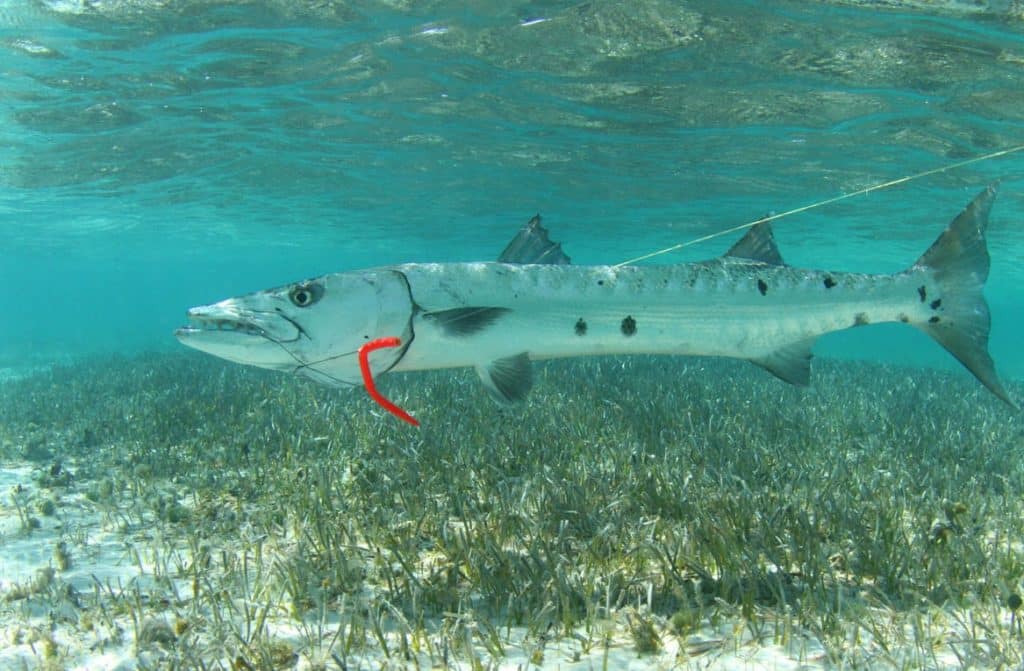
Barracuda also take to the air upon occasion, especially when hooked in shallow water. That unpredictable inclination and wolf-like fangs add up to a tricky combination.
Capt. Barry Meyer who guided in the Florida Keys related one such close ‘cuda call. While waiting for tarpon to show, he’d rigged up an angler with a wire trace and put on a live bait. The angler quickly hooked one of the ‘cuda hanging around, about a 15-pounder, which tore off 75 yards of light line and turned in a bee-line for the boat. At the last minute it came flying out of Florida Bay, landing right in the boat, but luckily hitting no one.
But that was just a warm-up. Soon after, a much larger barracuda struck a live pilchard near the boat. This time, rather than streaking away, it darted around the boat in a semicircle then also launched itself out of the water, hitting the transom — and also cutting through half-inch, braided-Dacron anchor line. Meyer baited no more ‘cudas that day.
The Danger of Fishing Near Crocodiles
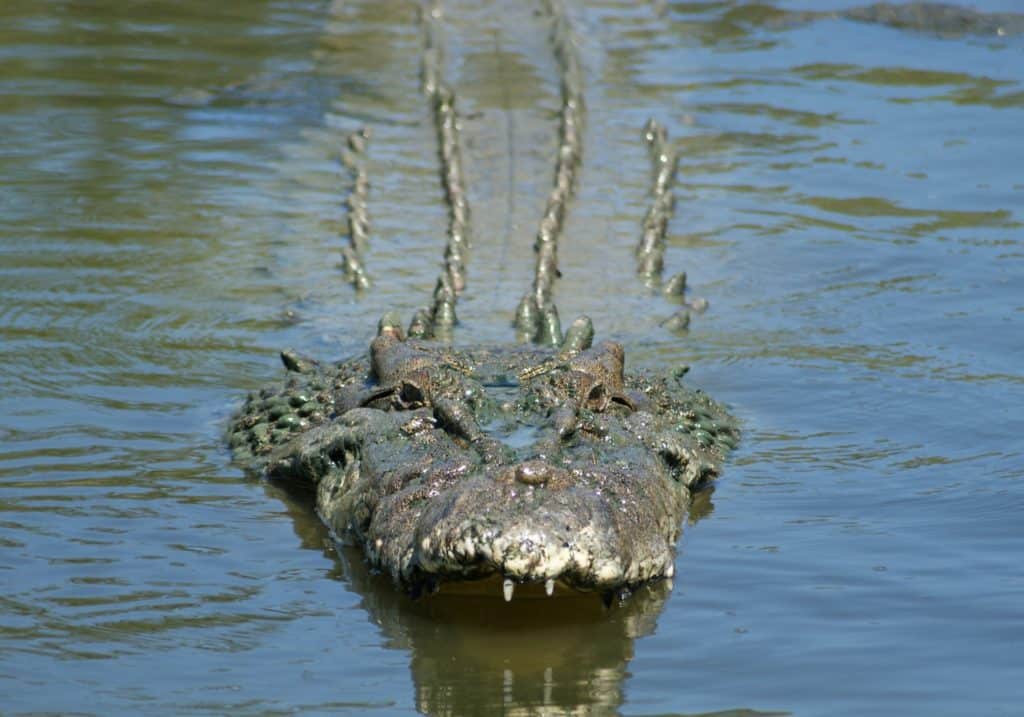
While a remote danger always exists that a shark or other fish could jump into a boat and injure an angler, it’s usually coincidence when it occurs. What happened some years back to three men fishing northwest Australia’s remote Kimberley region in their 16-foot skiff, according to an Associated Press account, was anything but coincidence.
Just when 34-year-old Norman Stanley had hooked up with a good fish, a 10-foot croc leapt from the water into the boat to clamp down on Stanley’s right shoulder, no doubt intending to drag its prey back into the waters of Cambridge Gulf. Stanley went down in the boat and the saltie (as they’re known Down Under) released its grip, perhaps hitting its throat on the gunwale. The nearest hospital, in Kununurra, treated the angler’s wounds. But that’s not a one-off: Salties are a well-known threat to small-boat anglers.
Years ago, Australian Kevin Eccles of Howard Springs was fishing from a small aluminum boat when a mere 8-footer leaped up and sank its jaws into Eccles’ shoulder. He held onto the boat literally for dear life with one hand and poked his finger into the croc’s eyes with the other which amazingly caused it to let go. Even more amazingly, Eccles’ fishing buddy, who had fallen asleep before the sudden attack, remained asleep until the wounded angler fell on top of him. Eccles was treated and recovered.
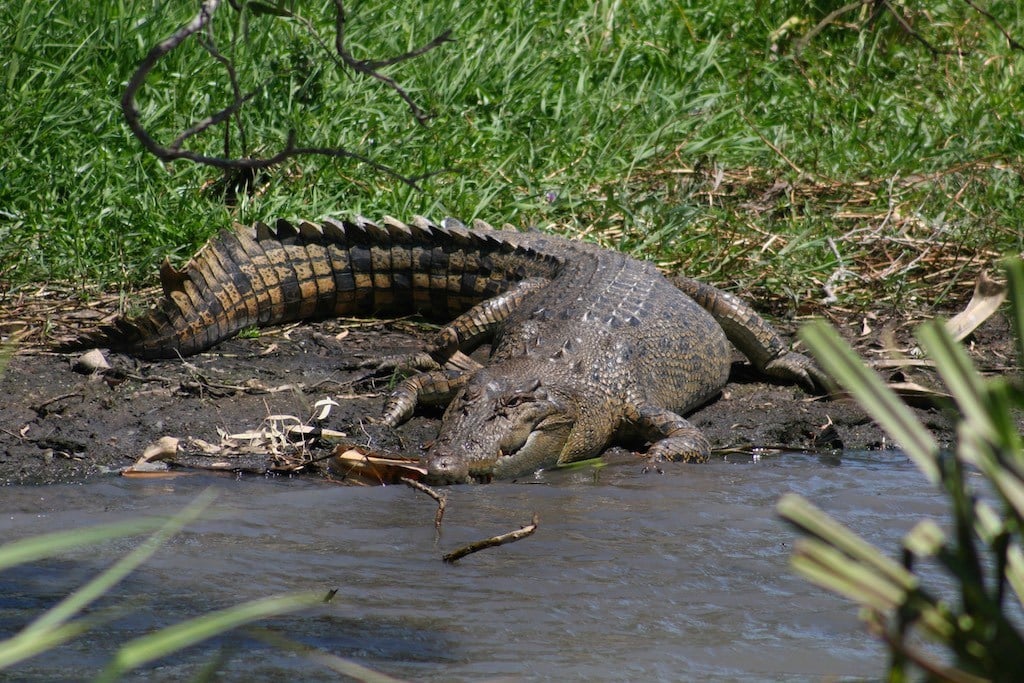
The saltwater crocodile (Crocodylus porosus) is the largest of all crocs, reaching 20 to 25 feet in length (by comparison, a minivan is about 16 feet long). It need fear little, even attacking adult water buffalo. Besides being abundant around northern Australia, the animals range throughout much of the Indo-Pacific, where they find suitable estuaries and mangrove swamps — though they also can be found swimming the open ocean, miles from shore.
Col Roberts, a prolific Australian fishing writer and superb photographer who pubished the visually sumptuous Fishing Wild Magazine, has never had a croc leap from the water and grab him. But, “I’ve had to use a little persuasion to keep them out of the boat — in the form of an oar. You can often tell if a croc is about to attack as they bristle and arch their backs like a dog. That’s the time to start the motor and get the hell out of the place.”
Roberts’ scariest croc encounter occurred when he was trolling at low tide beneath a steep 15-foot-high bank in search of barramundi. The bank had been right at water level at high tide: Tides of 15 to 20 feet are common in much of northern Australia. Suddenly a 14-foot croc came flying down from the bank: “The first thing we saw was its giant shadow. We instinctively ducked as the croc belly-flopped off the transom of the boat and into the water.” Had the gargantuan lizard jumped seconds sooner and landed amidships, Roberts realizes he might not be telling the story today.
Be Careful of Sea Snakes
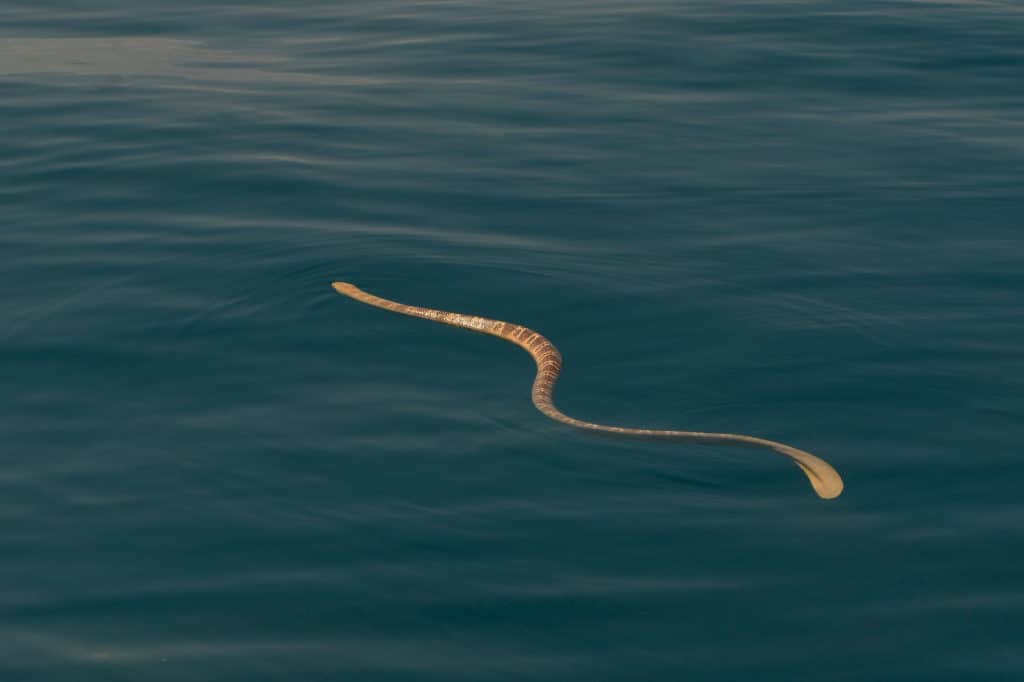
While any consideration of the sea in a sinister sense suggests large animals with big teeth, a whole host of much smaller bad boys can put the hurt (or worse) on an unwary angler. Ironically, the one with the smallest teeth can give the nastiest bite: the sea snake. Many species of these highly specialized marine reptiles (with flat rudder-like tails that make them surprisingly efficient swimmers) inhabit tropical oceans around the world.
The venom of some species is among the most toxic in the world; one drop could kill several men. Fortunately, their teeth are very small and their bite is weak; apparently, to do harm, a sea snake would have to bite in an area of thin skin and have plenty of time to sink its teeth and envenomate a person.
Unlike crocs or sharks, sea snakes don’t jump into boats, but they are quite a common sight in many warm seas where anglers fish (and may occasionally snag an unwitting snake). Serious bites from sea snakes are extremely rare. Some people have died from sea snake bites, most often Asian fishermen, but a surprising number of bite victims have recovered (some with anti-venom treatment but others without), probably because it is difficult for a sea snake to inject a large amount of venom.
The Deadly Bite of a Blue Ringed Octopus
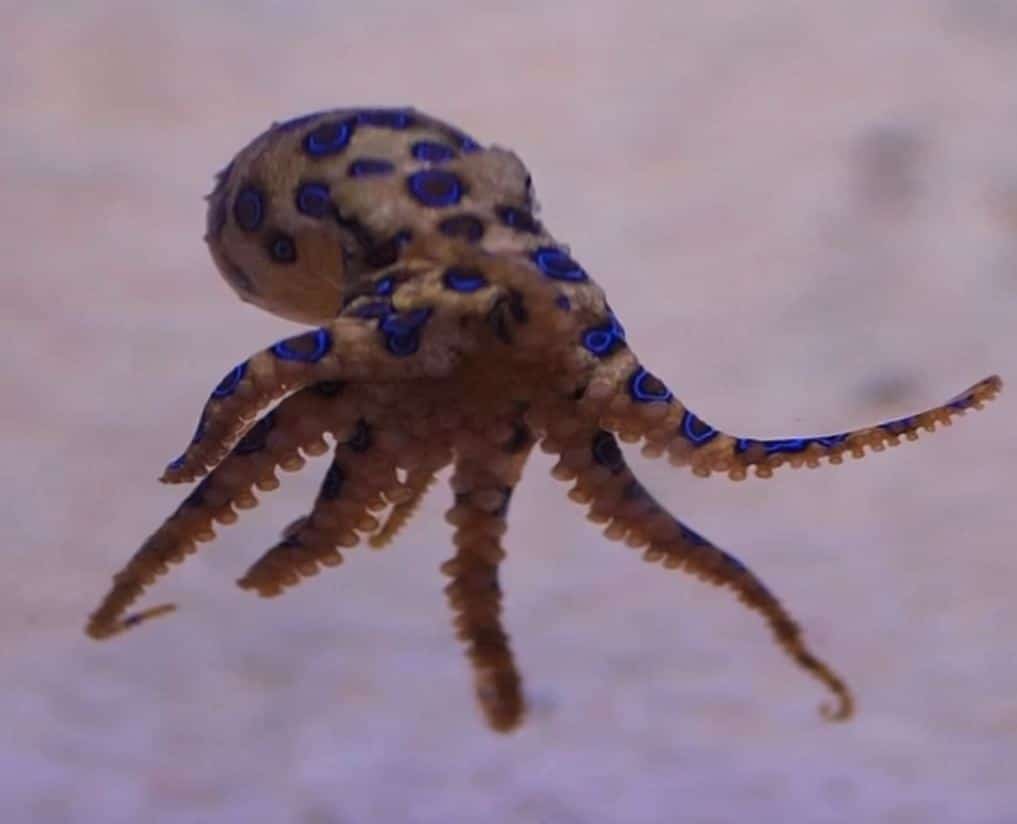
Then there’s the blue-ringed octopus, which Aussie fishing authority and writer Rod Harrison so marvelously describes as being “about the size of a lap-dog scrotum and more deadly than a tax investigator.”
Shorebound anglers Down Under should steer clear of the little, brightly colored mollusks, which can often be seen in the rocks. Harrison points to a “strapping young SAS bloke — same as your Green Berets” who picked one up while on a survival exercise near Sydney.
Only later did the autopsy crew figure out what had killed him, Harrison added. Paralysis can begin within minutes of the typically painless bite.
Bluefish Bite Hard
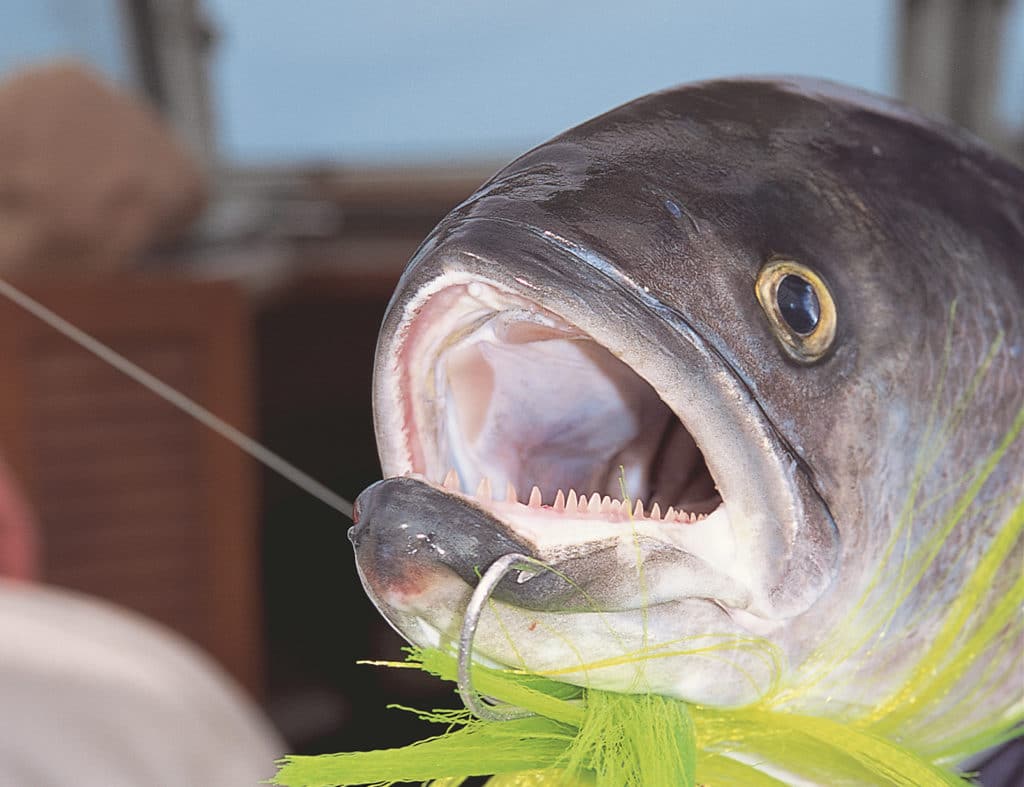
Much closer to home and less deadly, but still nasty enough to have left scars on many a Northeast fisherman’s hands, is the bluefish. Among their nicknames: “choppers” and “snappers,” and with good reason. Their very powerful jaws are rimmed with sharp teeth, and their take-no-prisoners pugnaciousness accounts for long-time skippers like Al Anderson — who fishes his Prowler out of Snug Harbor, Rhode Island — saying, “I’ve got lots of scars over the years from handling fish — the worst are from bluefish.”
Longtime boating and fishing writer Lenny Rudow also bears bluefish scars, particularly from one memorable 12-pounder. He held that fish out on the leader with his right hand. “I was leaning my left hand on the gunwale. Before I had a chance to shake the blue free, it jumped out of the water towards the bow (against the current), sailed 3 feet and chomped down on my left hand. Two fingers were sliced open to the bone, right at the knuckles. This was an intentional attack! This fish went exactly where it was aiming — at my hand.”
In his authoritative book, Angler’s Guide to the Salt Water Game Fishes, published in 1958, the late Ed Migdalski wrote, “I would like to leave you with one piece of personal advice: always have your wits about you when disengaging hooks from a bluefish’s mouth.” It’s heartfelt advice: Migdalski goes on to cite an incident during a day of bluefishing as a boy when he watched a blue snap off the forepart of his father’s right index finger.
What is a mantis shrimp?
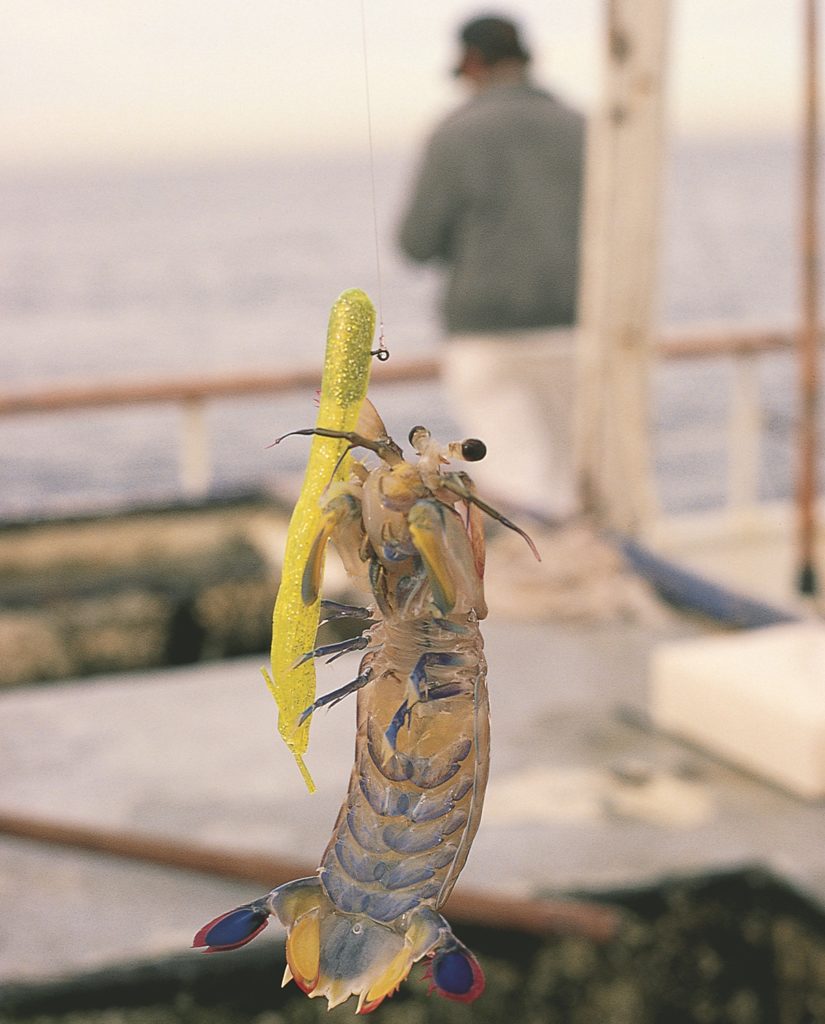
Ironically, one of the meanest, orneriest varmints to belly up to the sandbar in warm, inshore waters sports no teeth, no toxin, no dorsal spines and seldom weighs more than a pound.
But “Mantis shrimp have a pair of sharply spiney arms to pierce prey, which they pull into their holes. They can strike with the force of a .22 caliber,” said Mark Nichols, of D.O.A. Lures fame, near Stuart, Florida. Nichols cites stepping on a 14-incher that drove one of these “scalpel-like arms” right through his shoe and into his foot.
Capt. Mike Holliday recalls being flagged down by a wade fisherman fishing Indian River flats in central Florida. “When I pulled up, I could see that the water around his legs was bright red. Thinking he’d been bitten by a shark, I motored up and helped him in the boat. He was wearing sneakers — but the entire top of one foot was split wide open to the bone. A mantis shrimp had opened his foot to the tune of about 30 stitches!”
From the pincers of mantis shrimp to the bills of marlin, the sea does indeed have its sinister side. This series is meant to enlighten and entertain, but hardly to frighten: Most anglers spend a lifetime enjoying their sport without serious injury. Still, knowing the potential risks, however remote, can help fishermen avoid tempting fate simply by using caution, common sense and staying alert when on the water.

